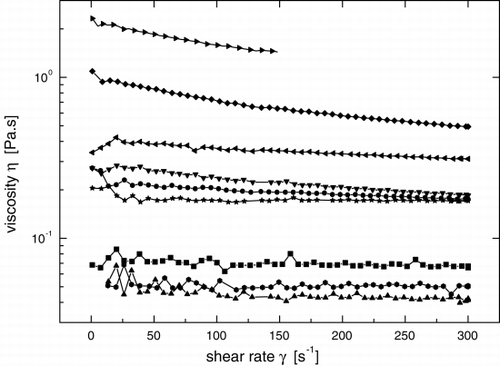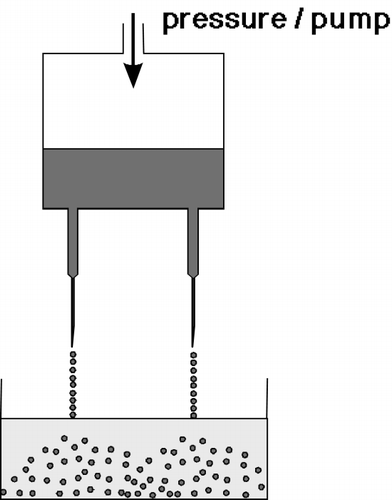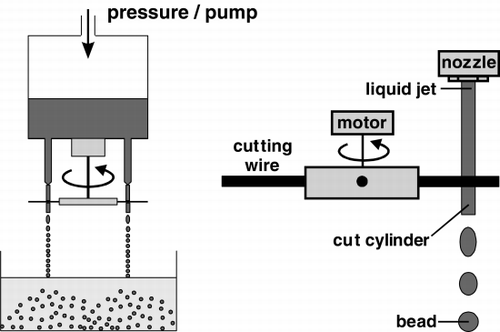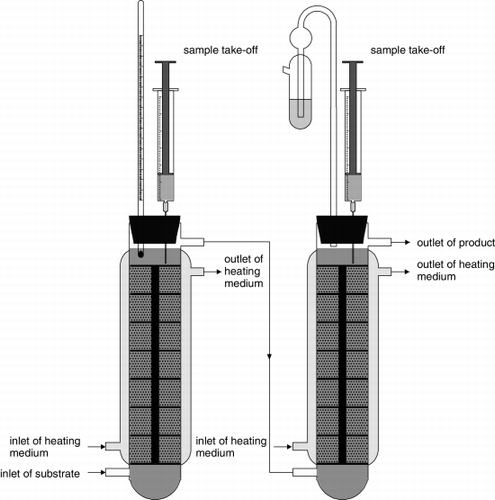Figures & data
Table 1. Macromolecular Characteristics of Commercial and Laboratory-Prepared Samples of Pectate Gel Bead Precursors Related to Mechanical Properties of Calcium Alginate Gel Beads
Table 2. Macromolecular Characteristics of Polysaccharide Gel Precursor
Table 3. Macromolecular Characteristics of Polysaccharide Gel Precursor
Figure 1. Viscosity curves as a function of the shear rate γ. The measurements were done at 25°C using the rotational viscometer VT550 (Haake, Germany). Last digit in legends expresses the gel concentration in % (w/w): A10–Protanal LF 10/60; A20–Protanal LF 20/60 Pronova, Drammen, Norway; FAL–pectinate type 1, Federal Agricultural Research Centre, Braunschweig, Germany; APA–pectate type 4, Slovak Academy of Sciences, Bratislava, Slovak Republic. ▪–A102, •–A103, ▴–A201, ▾–A202, ♦–A203, ◂–FAL5, ▸–FAL8, ⧫–APA5, *–APA8.

Table 4. Mechanical Characteristics of Calcium Polysaccharide (Polyuronate) Gel Beads Prepared by Single-Nozzle JetCutter Device (Prüße et al., 1988) and Measured by Device According to Washausen
Table 5. Rheological Parameters K (Consistence Index) and n (Flow Index) Evaluated According to the Ostwald de Waele Model for Pseudoplastic Liquids− τs= Kγ n, Where τ is the Shear Stress and γ is the Shear Rate (Viscosity Measurements Were Done at 25°C (Temperature at Which Bead Preparation Is Done) and 35°C (Many Fermentations Are Done at This Temperature) Using Rotational Viscometer VT550 (Haake, Germany))
Figure 2. Simple laboratory multi-nozzle device for gel bead production. The solution of potassium pectate containing the cell suspension is pushed through the needle and dropped into the CaCl 2 solution.

Figure 3. Sophisticated “jet-cutting” system for production of gel immobilizates. The beam of potassium pectate solution containing the cell suspension running from the nozzle is cut by single- (Prüße et al., 1998) or multi-wire cutting rotary device.

Figure 4. Diagram of a two-column packed-bed bioreactor for primary fermentation process of mead using immobilised yeast two-stage reactor system. The volume of the reactor system was 1100 ml with an internal diameter of 4.6 cm.
